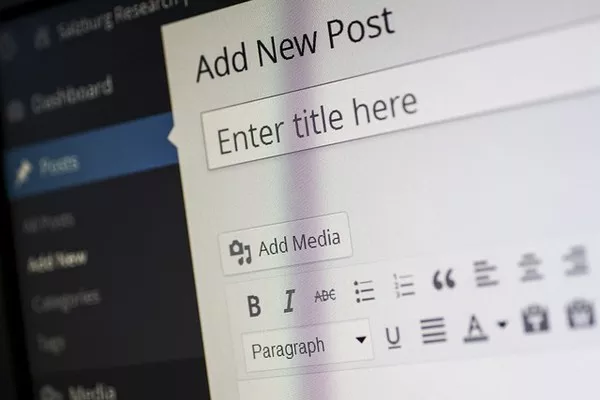In the realm of WordPress, permalinks are an essential yet often overlooked aspect of website management. They play a crucial role in SEO, usability, and overall website structure. This article will explore what permalinks are, where to find them in WordPress, how to configure them, and their significance for your website’s performance.
What Are Permalinks?
Permalinks, short for “permanent links,” are the URLs used to access individual posts, pages, or other content types on your WordPress site. Unlike temporary links, which may change over time, permalinks are designed to remain unchanged. A well-structured permalink helps both users and search engines navigate your site efficiently.
The Importance of Permalinks
1. SEO Benefits
Search engine optimization (SEO) is integral to any successful online presence. Search engines use URLs to determine the relevance and context of web pages. A well-structured permalink can significantly improve your site’s SEO by including relevant keywords and making it easier for search engines to index your content.
2. User Experience
A user-friendly permalink structure enhances the overall experience for visitors. Clear and descriptive URLs are easier to read, remember, and share. When users can quickly ascertain what a link contains from the URL alone, they are more likely to click on it. A simple structure can also help to build trust, making users more likely to revisit your site.
3. Link Sharing
When sharing links on social media or other platforms, having clean, descriptive permalinks increases the likelihood of engagement. People are more inclined to click on links that they can quickly understand, leading to higher traffic and visibility for your content.
How to Access and Modify Permalinks in WordPress
Step 1: Log in to Your WordPress Dashboard
To modify your permalink settings, you need to access your WordPress dashboard. Simply enter your website URL followed by /wp-admin, and log in with your credentials.
Step 2: Navigate to the Permalink Settings
Once you’re logged in, follow these steps:
Go to Settings: On the left sidebar of your dashboard, look for the Settings menu. Click on it to reveal additional options.
Select Permalinks: From the drop-down list under Settings, click on Permalinks. This will take you to the permalink settings page, where you can configure the URL structure for your posts and pages.
Step 3: Choose a Permalink Structure
On the Permalink Settings page, you’ll find several options for your permalink structure. Here are the most common types:
Plain: The default setting, which generates URLs like https://www.yoursite.com/?p=123. This structure is not user-friendly or SEO-friendly.
Day and name: This structure includes the date and the post name, resulting in URLs like https://www.yoursite.com/2024/10/12/post-name/. This format is useful for news sites or blogs that post frequently.
Month and name: Similar to the day and name structure but includes only the month and year, leading to URLs like https://www.yoursite.com/2024/10/post-name/.
Numeric: This option generates URLs based on the post ID, such as https://www.yoursite.com/archives/123. While simple, this structure lacks meaningful context.
Post name: This is often the preferred structure for blogs and content-focused websites. It generates URLs like https://www.yoursite.com/post-name/, making them easy to read and share.
Custom Structure: If you have specific needs, you can create a custom permalink structure using available tags. For example, you can combine different elements like categories and post names.
Step 4: Save Changes
After selecting your desired permalink structure, scroll down to the bottom of the page and click the Save Changes button. Your new permalink structure will take effect immediately.
Step 5: Redirect Old URLs (if necessary)
If you’re changing an existing permalink structure, it’s important to set up 301 redirects for your old URLs to ensure that visitors and search engines are directed to the correct pages. This helps maintain your SEO rankings and prevents users from encountering 404 errors.
Best Practices for Permalink Structure
To maximize the effectiveness of your permalinks, consider the following best practices:
1. Keep It Simple
A clean, concise URL is always preferred. Avoid unnecessary words and characters that may confuse users or search engines.
2. Use Keywords Wisely
Incorporate relevant keywords into your permalinks, as they provide context for both users and search engines. However, avoid keyword stuffing, which can be detrimental to SEO.
3. Avoid Special Characters
Special characters, such as &, %, and $, can complicate URLs. Stick to hyphens (-) to separate words, as they are more readable and recognized by search engines.
4. Limit URL Length
Shorter URLs are generally more user-friendly and easier to share. While there’s no strict character limit, aim for brevity while maintaining clarity.
5. Be Consistent
Maintain consistency in your permalink structure across your entire site. This not only helps with SEO but also ensures a cohesive user experience.
6. Avoid Changing Permalinks Frequently
Frequent changes to permalinks can lead to broken links and negatively impact your site’s SEO. If changes are necessary, always implement proper redirects.
See Also What Is WordPress Web Design?
Conclusion
Understanding and optimizing permalinks in WordPress is crucial for building a user-friendly and SEO-optimized website. By following the steps outlined in this article, you can easily access and modify your permalink settings to improve your site’s performance and user experience. Remember that a well-structured permalink is not just a technical detail; it’s a vital component of your overall web strategy.
You Might Be Interested In
- Creating an Online Store with WordPress: A Comprehensive Guide
- What is WordPress Hosting?
- What Websites Use WordPress (Revealed!)

